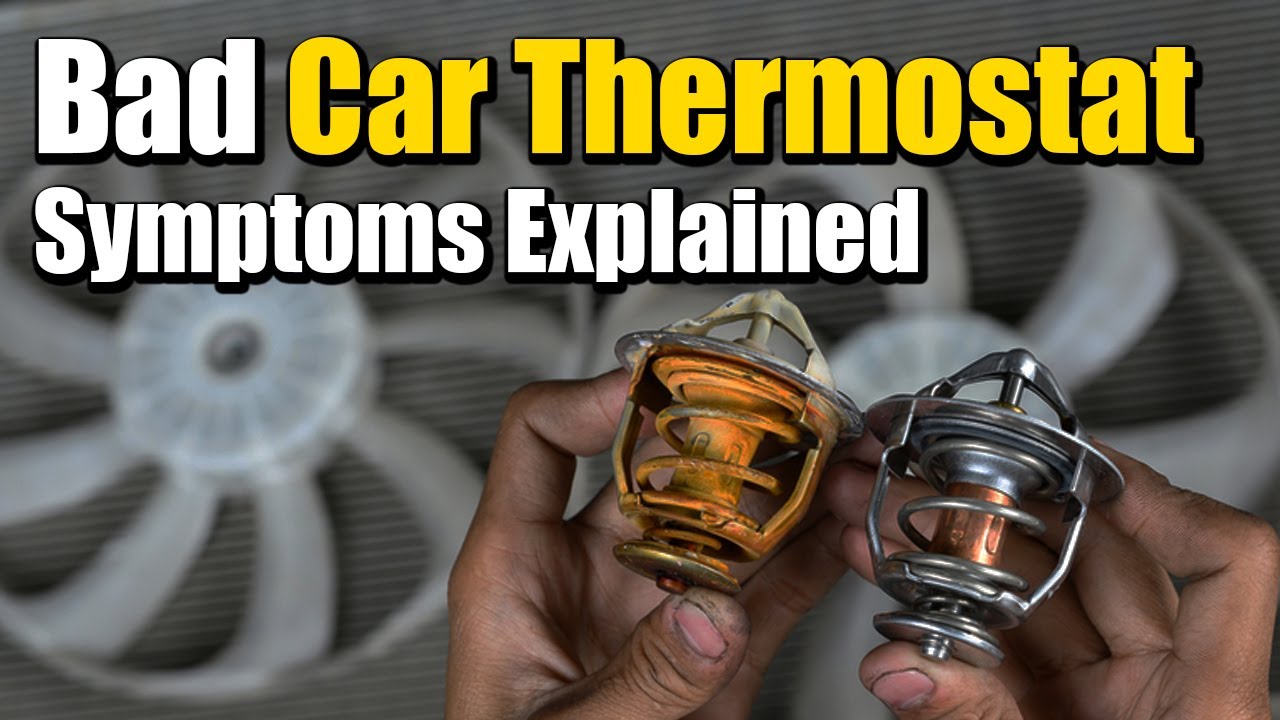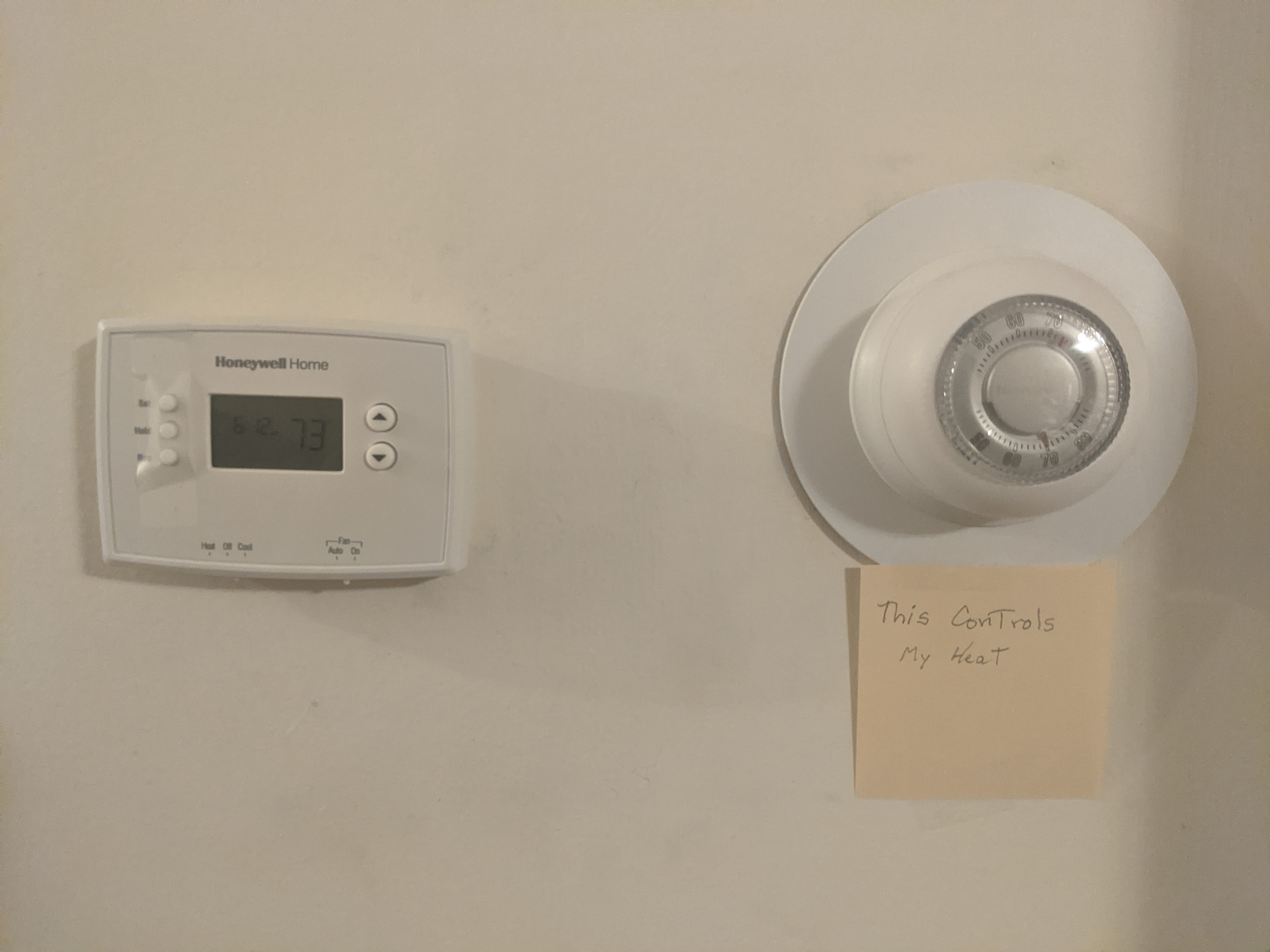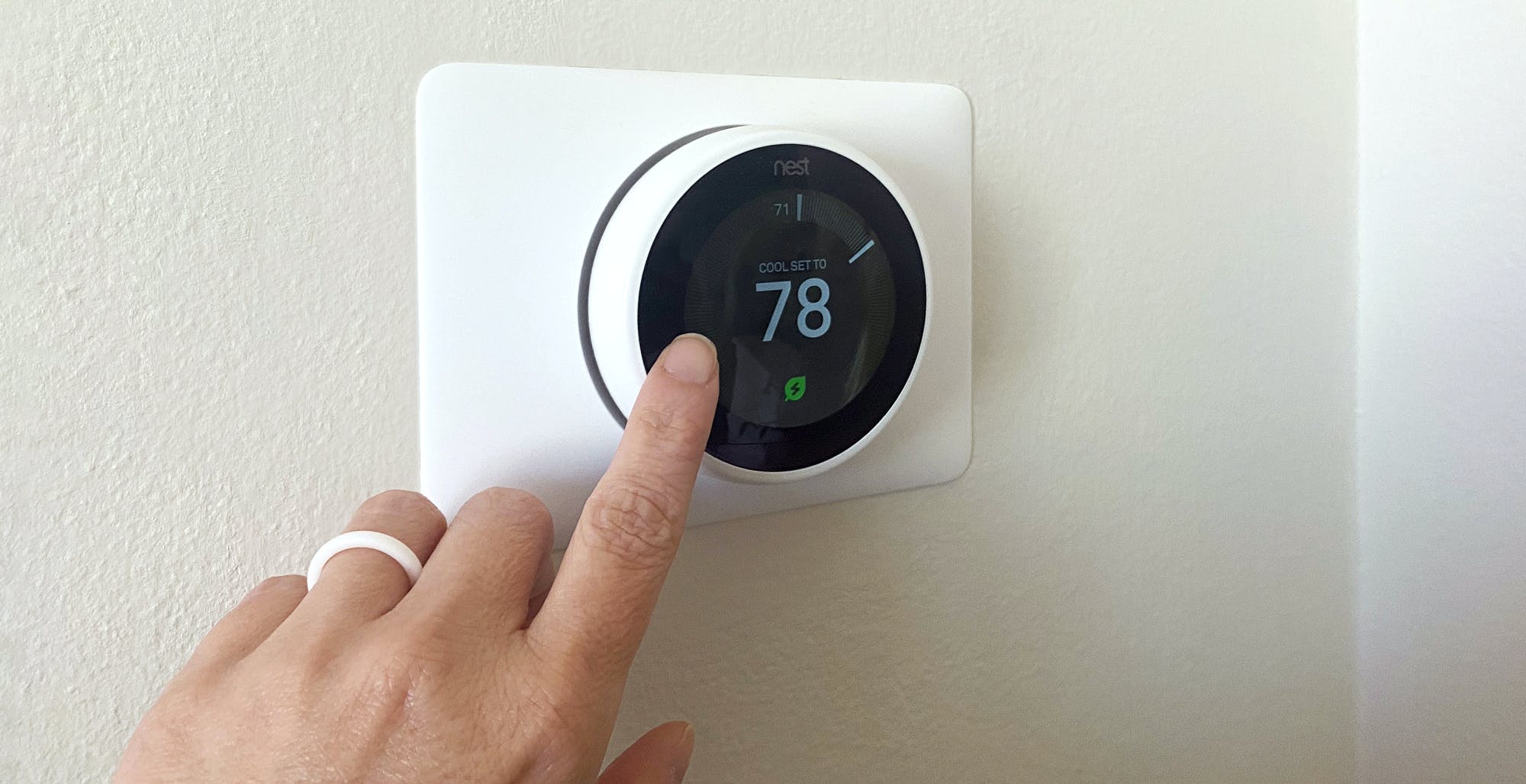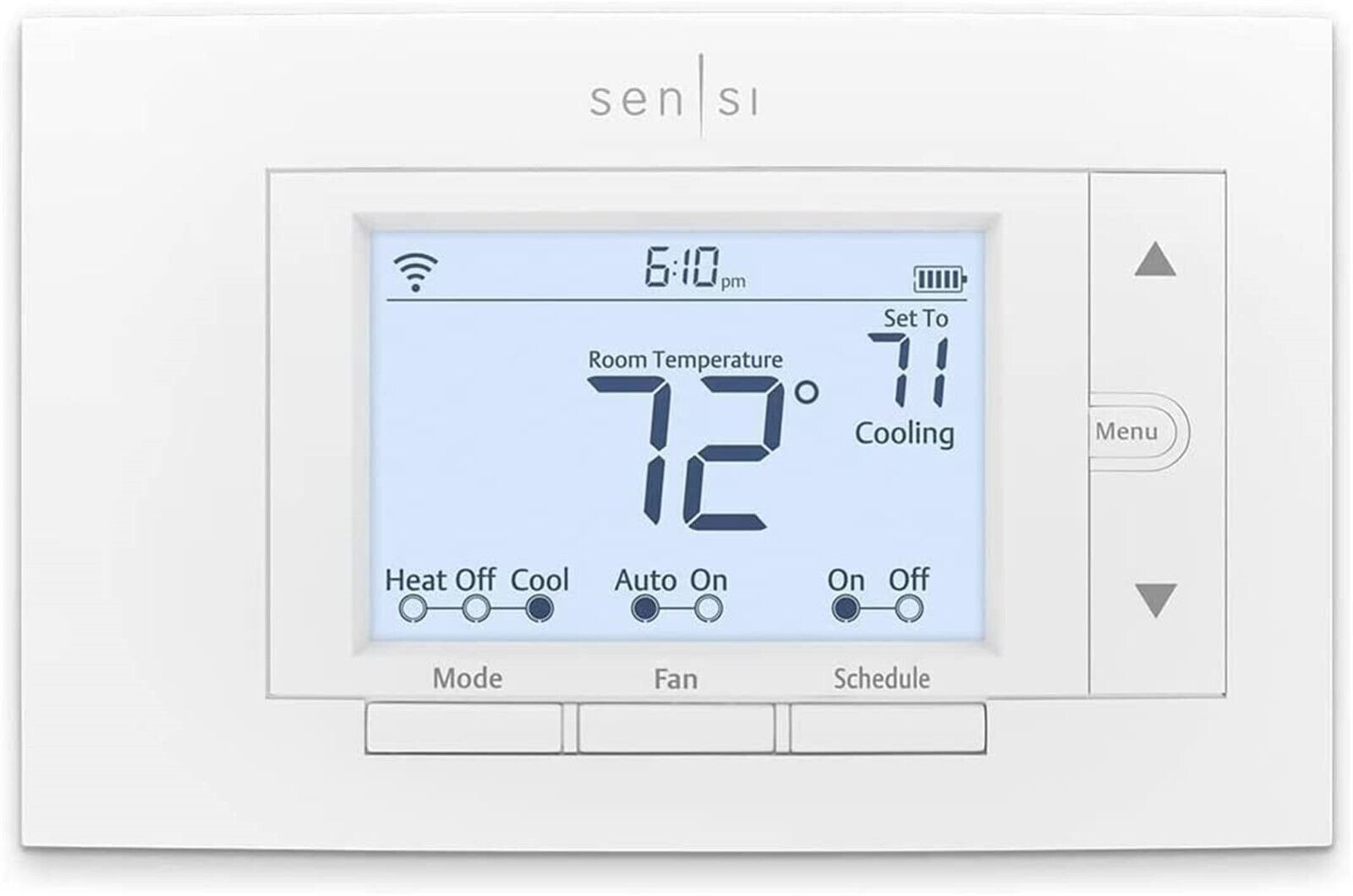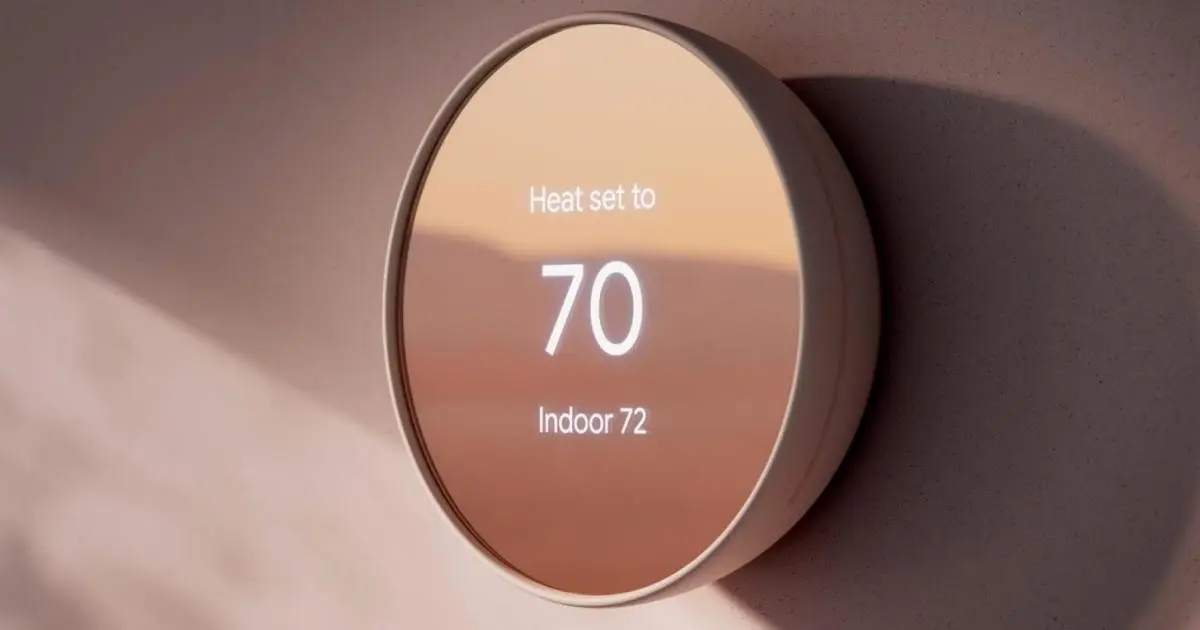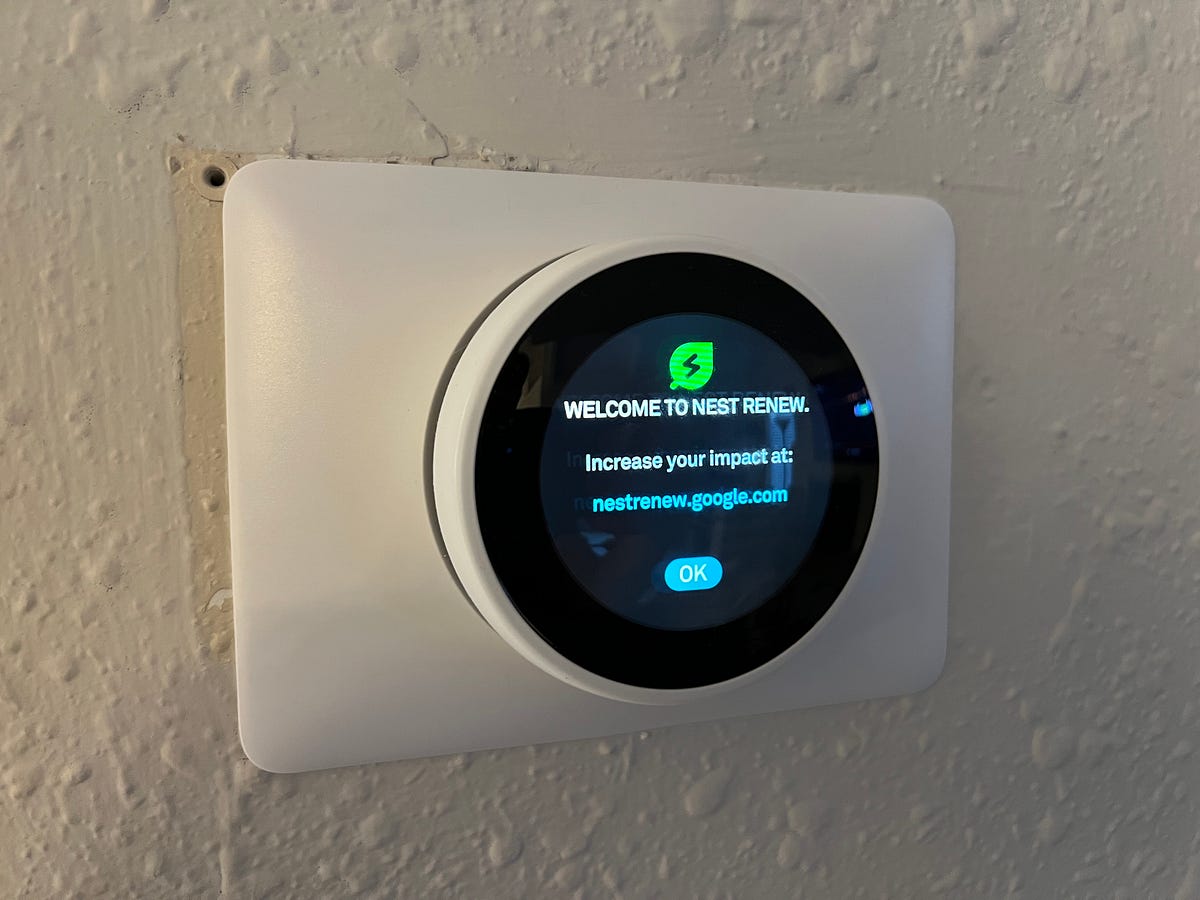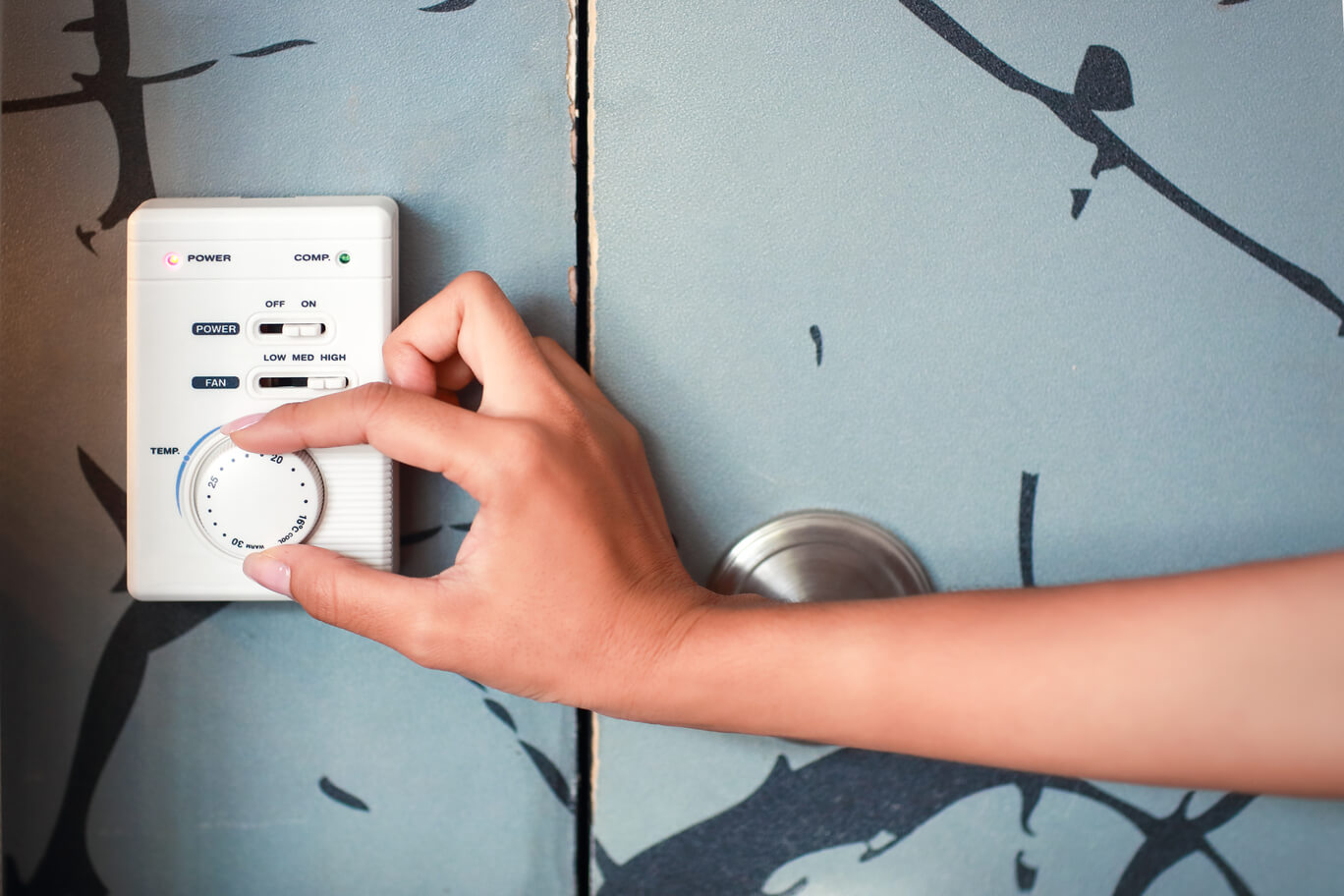Introduction
A thermostat is a crucial component of any heating or cooling system, serving as the control center for regulating the temperature in your home or office. It monitors the current temperature and adjusts the heating or cooling system accordingly to maintain a comfortable environment. However, like any other electronic device, thermostats can go bad over time, leading to inefficiencies and potential system failures.
Understanding the signs of a malfunctioning thermostat and taking necessary preventive measures can help you avoid discomfort and costly repairs. This article will explore the causes of thermostat failure, the impact it can have on your comfort and energy bills, and how to prevent such issues from occurring in the first place.
Whether you have a traditional mechanical thermostat or a modern programmable digital thermostat, it’s important to be aware of the common symptoms of a faulty thermostat. By recognizing these signs early on, you can take action before the situation worsens and ensure optimal performance of your heating and cooling systems.
In the following sections, we will discuss the common causes of thermostat failure and their impact. We will also provide valuable tips on preventing thermostat failure and discuss the options of professional repair or replacement. By the end of this article, you will have a better understanding of why thermostats go bad and what steps you can take to keep yours in good working condition.
What is a Thermostat?
A thermostat is a device that controls the temperature of a heating or cooling system, ensuring that it remains within a desired range. It acts as a sensor and a switch, monitoring the current temperature and signaling the heating or cooling system to turn on or off based on the set temperature.
Thermostats come in various types and models, ranging from simple manual units to more advanced programmable or smart thermostats. Manual thermostats require manual adjustments to set the desired temperature, while programmable thermostats allow you to program different temperature settings for different times of the day or week.
Smart thermostats, on the other hand, are connected to the internet and can be controlled remotely through a smartphone app. These devices often incorporate advanced features like learning capabilities, energy usage monitoring, and integration with smart home systems.
A thermostat typically consists of a temperature sensor, a user interface, and a relay or switch. The temperature sensor measures the ambient temperature and sends a signal to the control unit, which compares it to the set temperature. Based on this comparison, the control unit activates the heating or cooling system to maintain the desired temperature.
Thermostats play a pivotal role in optimizing energy consumption and maintaining a comfortable living or working environment. They allow you to set and control the temperature according to your preference, enabling efficient operation of the heating and cooling systems.
Furthermore, advanced thermostats can provide valuable data and insights into energy usage patterns, allowing users to make informed decisions about energy conservation and cost savings. In essence, a thermostat is the heart of any heating or cooling system, ensuring temperature control and energy efficiency.
Signs of a Bad Thermostat
A bad thermostat can lead to discomfort, inefficient heating or cooling, and higher energy bills. Recognizing the signs of a malfunctioning thermostat is crucial to addressing the issue promptly. Here are some common indicators that your thermostat may be going bad:
1. Temperature inconsistencies: If you notice significant temperature variations between different rooms or areas of your home, even though the thermostat is set to a consistent temperature, it could be a sign of a faulty thermostat. Inaccurate temperature readings can lead to improper regulation of the heating or cooling system.
2. Constant cycling: Your thermostat should turn on and off as needed to maintain the desired temperature. If you notice that your heating or cooling system is constantly running or cycling on and off rapidly, it may indicate a malfunctioning thermostat. This can result in uneven temperatures and unnecessary energy consumption.
3. Inaccurate temperature readings: If your thermostat displays incorrect temperature readings or doesn’t accurately reflect the actual room temperature, it may indicate a faulty sensor. Inconsistent temperature readings can lead to inefficient operation of the heating or cooling system.
4. Unresponsive controls: A thermostat that doesn’t respond to adjustments or fails to change the temperature settings as programmed can indicate a malfunction. This can be frustrating and hinder your ability to maintain a comfortable indoor environment.
5. Delayed or no response: When you adjust the temperature settings on your thermostat, you should notice a prompt response from the heating or cooling system. If there is a delay or no response at all, it could be a sign of a faulty thermostat or a wiring issue that needs to be addressed.
6. Short cycling: Short cycling refers to the frequent turning on and off of the heating or cooling system within a short period. This can put unnecessary strain on the system and lead to increased wear and tear. A malfunctioning thermostat can cause this erratic behavior.
7. Increased energy bills: If you notice a sudden spike in your energy bills without any change in your usage patterns, it could be attributed to a faulty thermostat. Inefficient operation of the heating or cooling system due to a malfunctioning thermostat can lead to higher energy consumption.
8. Age of the thermostat: If your thermostat is old, it may be more prone to failure. Over time, components wear out and lose their accuracy. If you’ve had your thermostat for an extended period, it may be worth considering a replacement.
If you notice any of these signs, it’s advisable to have a professional technician inspect your thermostat and heating or cooling system. They can accurately diagnose the issue and recommend an appropriate solution, whether it’s a simple repair or a complete replacement of the thermostat.
Common Causes of Thermostat Failure
Thermostats can fail for various reasons, which can disrupt their functionality and accuracy. Understanding the common causes of thermostat failure can help you identify and address the underlying issue. Here are some of the most frequent culprits:
1. Dust and debris: Accumulation of dust and debris can affect the internal components of the thermostat, leading to inaccurate temperature readings and improper functioning. Regular cleaning and maintenance can help prevent this issue.
2. Electrical problems: Faulty wiring, loose connections, or power surges can cause damage to the thermostat’s electrical components, rendering it dysfunctional. It’s important to ensure that the electrical connections are secure and stable.
3. Sensor malfunction: The temperature sensor inside the thermostat can become damaged or malfunction over time. This can result in inaccurate temperature readings and erratic operation of the heating or cooling system.
4. Battery issues: Some thermostats rely on batteries for power backup or operation. If the batteries are low or dead, the thermostat may fail to function properly. Regularly checking and replacing batteries can help prevent this issue.
5. Age and wear: Like any electronic device, thermostats have a lifespan. Over time, the internal components may degrade or wear out, leading to diminished performance and eventual failure. Aging thermostats may require replacement.
6. Environmental factors: Extreme temperatures, humidity, or exposure to moisture can damage the internal components of the thermostat, causing it to malfunction. Proper insulation and protection can help mitigate these risks.
7. Incorrect installation: Improper installation of the thermostat can lead to calibration issues and incorrect temperature readings. It’s essential to follow the manufacturer’s instructions or seek professional help to ensure proper installation.
8. Mechanical faults: Mechanical thermostats have mechanical components that can wear out, such as springs and switches. Any mechanical failure can result in inaccurate temperature control and erratic behavior of the heating or cooling system.
Identifying the cause of thermostat failure is crucial for determining the appropriate solution, whether it’s a simple repair, replacement of faulty components, or the installation of a new thermostat. Consulting a professional technician is recommended to diagnose the underlying issue accurately.
Impact of a Bad Thermostat
A bad thermostat can have a significant impact on your comfort, energy efficiency, and overall functioning of your heating or cooling system. Here are some of the potential consequences of a malfunctioning thermostat:
1. Discomfort: An inaccurate thermostat can lead to inconsistent temperatures throughout your home or office. Some areas may feel excessively hot or cold, while others remain uncomfortable. This can cause discomfort and make it challenging to maintain a desirable indoor environment.
2. Energy wastage: A faulty thermostat can result in inefficient operation of your heating or cooling system. The heating or cooling equipment may run longer than necessary or cycle on and off more frequently than required, leading to energy wastage. This can result in higher energy bills and unnecessary strain on the system.
3. Reduced energy savings: Programmable thermostats are designed to save energy by adjusting temperature settings based on your schedule. However, if the thermostat is malfunctioning, it may not follow the programmed settings accurately. This can negate potential energy savings and lead to increased energy consumption.
4. Decreased indoor air quality: A malfunctioning thermostat can prevent your HVAC system from adequately filtering and circulating the air in your home or office. This can result in poor indoor air quality, leading to allergies, respiratory issues, and discomfort for occupants.
5. Increased wear and tear: If a thermostat fails to cycle the heating or cooling system properly, it can cause excessive wear and tear on the equipment. Continuous operation or frequent cycling can lead to premature system failures, costly repairs, and the need for premature replacement of HVAC components.
6. Inaccurate temperature control: A bad thermostat may provide inaccurate temperature readings or fail to maintain the desired temperature settings. This can make it difficult to achieve the level of comfort you desire and result in temperature fluctuations that affect your overall well-being.
7. Suboptimal system performance: The performance of your heating or cooling system relies heavily on the accuracy and functionality of the thermostat. If the thermostat is faulty, it may not send the proper signals to the system to operate efficiently. This can lead to reduced performance, increased energy consumption, and inadequate comfort.
It’s important to address thermostat issues promptly to avoid these negative consequences. Consult with a professional technician to diagnose the problem, determine the most appropriate solution, and restore optimal functioning to your heating or cooling system.
How to Prevent Thermostat Failure
While thermostats can fail for various reasons, there are preventive measures you can take to minimize the risk of thermostat failure and ensure the long-term reliability of your heating or cooling system. Here are some important steps to follow:
1. Regular maintenance: Perform regular maintenance on your thermostat, including cleaning the surface and removing any dust or debris that may accumulate around the unit. This will help prevent blockages and ensure accurate temperature readings.
2. Check the wiring: Inspect the wiring connections to ensure they are secure and properly connected. Loose or damaged wiring can cause intermittent issues with the thermostat’s functionality. If you suspect a wiring problem, consult a professional technician for assistance.
3. Keep the thermostat away from heat sources: Install the thermostat away from direct heat sources such as sunlight, lamps, or appliances that generate heat. Excessive heat exposure can affect the accuracy of temperature readings and potentially damage the thermostat’s internal components.
4. Maintain proper insulation: Ensure your home or office has adequate insulation to minimize temperature fluctuations and reduce the strain on your heating or cooling system. Proper insulation helps the thermostat maintain a consistent temperature and prevents unnecessary system cycling.
5. Change batteries regularly: If your thermostat operates on batteries, replace them according to the manufacturer’s instructions or at least once a year. Fresh batteries provide reliable power and prevent the thermostat from shutting down unexpectedly.
6. Upgrade to a programmable or smart thermostat: Programmable or smart thermostats offer advanced features that can improve energy efficiency and reduce strain on your heating or cooling system. These thermostats allow you to program temperature settings based on your schedule, enabling more precise control and energy savings.
7. Schedule professional inspections: Regularly schedule professional inspections and maintenance for your heating and cooling system. A professional technician can assess the condition of your thermostat, clean any internal components, and identify potential issues before they escalate.
8. Follow manufacturer guidelines: Read and follow the manufacturer’s guidelines for your specific thermostat model. This includes guidelines for installation, usage, and maintenance. Adhering to these recommendations will help ensure optimal performance and longevity of your thermostat.
By following these preventive measures, you can significantly reduce the chances of thermostat failure and maintain a well-functioning heating or cooling system. The key is to be proactive and address any issues promptly to avoid inconvenience, discomfort, and unnecessary expenses.
Professional Thermostat Repair or Replacement
If you’re experiencing issues with your thermostat, it’s important to determine whether it can be repaired or if a replacement is necessary. Consulting a professional technician can help you make an informed decision. Here are some factors to consider when considering thermostat repair or replacement:
1. Age of the thermostat: The age of your thermostat is a significant factor to consider. If your thermostat is nearing the end of its expected lifespan or has been in use for many years, a replacement may be a more cost-effective long-term solution. Newer models often incorporate advanced features and improved energy efficiency.
2. Extent of the issue: The severity and complexity of the thermostat issue will determine whether repair is feasible. Simple issues, such as loose wiring or minor component failures, can often be resolved through professional repairs. However, if the problem is more extensive, such as a faulty sensor or damage to internal components, a replacement may be necessary.
3. Compatibility with the HVAC system: When considering a thermostat replacement, it’s crucial to ensure compatibility with your existing heating and cooling system. Different systems may require specific thermostat models or wiring configurations. A professional technician can assess compatibility and recommend suitable replacement options.
4. Energy savings and features: Upgrading to a programmable or smart thermostat can offer significant energy savings and enhanced functionality. These thermostats allow you to program temperature settings based on your schedule or control them remotely through smartphone apps. Consider the potential energy savings and advanced features when deciding between repair and replacement.
5. Overall system condition: Assess the condition of your heating or cooling system as a whole. If your HVAC system is aged, inefficient, or requires extensive repairs, it may be more practical to replace the thermostat along with the system. An integrated and well-matched system can optimize performance and efficiency.
6. Cost considerations: Compare the cost of repair versus the cost of replacement. In some cases, repairing a minor issue may be more cost-effective than replacing the entire thermostat. However, if the repairs are extensive or if the thermostat is outdated, investing in a new, reliable thermostat could offer better long-term value.
7. Professional expertise: Engaging the services of a professional technician is essential for properly diagnosing and addressing thermostat issues. They can provide expert advice on the most suitable course of action, whether it’s repair or replacement. Their expertise ensures that the job is done correctly and that your heating or cooling system operates optimally.
Ultimately, the decision to repair or replace your thermostat depends on various factors specific to your situation. Consulting with a professional technician will help you make an informed choice and ensure that your thermostat and heating or cooling system continue to function reliably and efficiently.
Conclusion
Thermostat failure can disrupt the comfort and efficiency of your heating and cooling system. Being aware of the signs of a malfunctioning thermostat, the common causes of thermostat failure, and the potential impact it can have allows you to take proactive measures to prevent such issues.
Regular maintenance, proper installation, and following manufacturer guidelines are essential for preventing thermostat failure. Cleaning the thermostat, checking wiring connections, and keeping it away from heat sources help ensure accurate temperature readings and reliable performance.
<p>If your thermostat does fail, it’s important to address the issue promptly. Consulting with a professional technician can help diagnose the problem accurately and determine whether repair or replacement is the most appropriate solution. Consider factors such as the age of the thermostat, the extent of the issue, compatibility with your HVAC system, and the potential energy savings and features of newer models.
Prioritizing the health of your thermostat and taking preventive measures can save you from discomfort, inefficient operation, and unnecessary expenses. By maintaining a well-functioning thermostat, you can enjoy optimal comfort, energy efficiency, and a smooth-running heating and cooling system.







